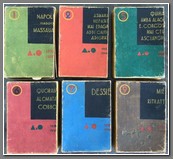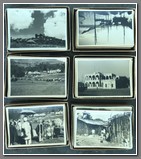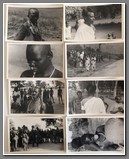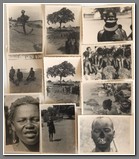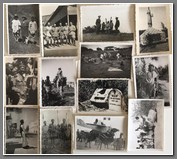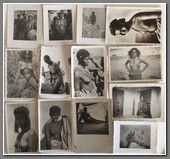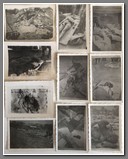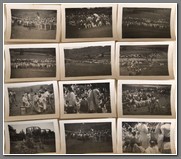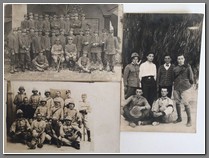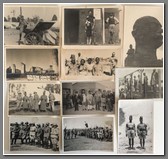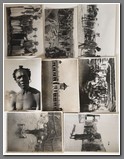ETH 333Ten photo snaps of the Gondrand massacre. B
Price: $200.00
Note: The Gondrand massacre occurred on February 13, 1936, near the northern Ethiopian town of Mai Lahlà, the current Rama. A camp of civilian workers for the logistics company Gondrand, engaged at the time in road construction, was attacked at dawn by Ethiopian soldiers under the orders of Ras Imru. The construction yard was equipped with about 15 muskets, and the workers also used their work tools as defense weapons, but they were overwhelmed by the surprise attack of the Ethiopians. https://detskydomov.sk/encyklopedia/?pojem=Gondrand_massacre - cite_note-5 The massacre took place around the same time as the Battle of Amba Aradam, fought from 10 to 19 February 1936, about 200 kilometres (120 mi) south of Mai Lahlà. Of the 130 workers present, 68 Italians were killed, and the bodies of 17 of them were castrated in contravention of Ethiopian Emperor Haile Selassie's explicit order not to mutilate enemy corpses, while 27 others were wounded and four went missing. Of these, two were later confirmed to have been taken prisoner. https://detskydomov.sk/encyklopedia/?pojem=Gondrand_massacre - cite_note-:0-2 About 40 Ethiopians soldiers also died in the attack, mostly because a store of gelignite exploded. Retaliatory massacres were carried out by Italian soldiers against Ethiopian civilians in the aftermath of the attack, resulting in untold deaths. Italian authorities generally instructed journalists to avoid describing Italian losses during the war, but in this case the story was deliberately promoted for its propaganda value in depicting Ethiopians as barbaric. The killing of Italian pilot Tito Minniti and his copilot happened some weeks before and together with this massacre was the reason why the Italians started to use some gas against the Ethiopians, according to historians like Tripoli and Pedriali. However, as professor of Italian studies David Forgacs argues, while "the Italians sought to give maximum publicity to the massacre of Italian civilians by Ethiopians at the Gondrand camp they were equally strenuous in their efforts to prevent records or reports of their own massacres of civilians". In response to photographic evidence that some Ethiopian troops had ignored the order against mutilating corpses, Ethiopia's Foreign Minister was forced to admit that it had happened, but argued that it should be seen as an act of protest against Italian atrocities. B

